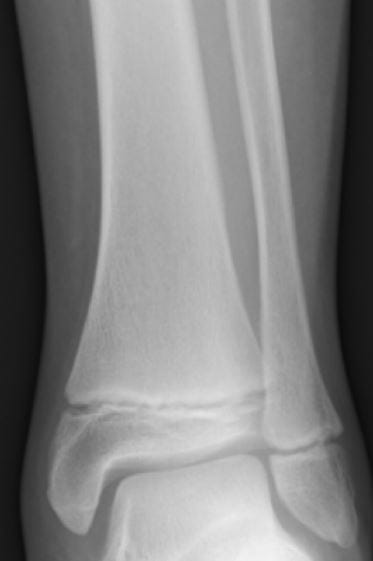Is Growing Taller After the End of Puberty Possible?
Originally posted on https://medium.com/@hghhelpp/is-growing-taller-after-the-end-of-puberty-possible-54f75d0e365a
Many people are dissatisfied with their height. But is there anything you can do about it?
When you ask this question, you are not alone. Some people say that good nutrition or special exercise can help you grow taller as an adult.
This article discusses whether it is possible to increase your height after the end of puberty.

 Grow Taller
Grow Taller
What determines your height?
Before discussing whether it is possible to increase your height as an adult, it is important to think about what determines your height. An easy answer is genetics according to Gilmorehealth.com but that’s not the whole story.
The study of twins is one of the ways in which scientists determine the extent to which genetics affects body size. In general, the height of twins is strongly correlated. This means that if one of the twins is tall, the other can also be tall.
Studies of twins estimate that 60–80% of the height difference between people is due to genetics.
The remaining 20–40% is due to environmental factors such as power supply.
Trends around the world help to demonstrate the importance of nutrition and lifestyle factors.
A large survey of 18.6 million people reported changes in growth over the past century.
The study found that in many countries the average person in 1996 was higher than in 1896.
Better food intake in these countries could be the cause of this change.
The Research On Height
Researchers estimate that the height differences between 60–80% is due to genetic factors and 20–40% due to environmental factors such as nutrition. In many countries, average growth has increased over the last century.
For most people, growing taller after the age of 18 is an important reason for an increase in height.
Even with a healthy diet, the growth of most people will not increase after the age of 18 to 20 years.
The reason your growth stops growing is because of the bones, especially the shallow growth disc.
Growth plates or epiphyseal plates are areas of specialized cartilage at the end of long bones.


The increase in growth is mainly due to the lengthening of the long bones, because the growth plates are still active or open. At the end of puberty, hormonal changes cause the growth plates to harden or close and stop the bone longitudinal growth. Growth plates are closed at 16 years old in women and between 14 and 19 years old in men.
Although a real increase in long bones will not occur in most adults, some small daily changes in height are typical. The reason for this change during the day is the slight compression of the discs in the spine.
Daily activities affect the cartilage and fluid in the spine and cause a slight drop in height during the day.
This height loss during the day can amount to approximately half an inch about 1.5 cm.
Some studies have shown that the height of the discs in the spine can be increased by young adults, but the effect on the total height is minimal.
Spinal Disc Decompression and Height
For most people, they can’t grow taller after 18 to 20 years due to the closure of the growth plates in the bones. Compression and decompression of the discs in the spine lead to small changes in height during the day. Lack of movement or stretching techniques can make you taller momentarily.
A common myth about growth is that some exercises or stretching techniques can make you bigger.
Many people say that activities such as hanging up, climbing, using an inverted table and swimming can increase your height. Unfortunately, there is no good evidence to support these claims.
It is true that your growth changes slightly during the day due to compression and decompression of the cartilage discs in your spine.
By decompressing discs, some of these activities may temporarily increase your height to a very limited extent.
However, this is not a real change in height as all changes are rapidly reversed after couple of hours standing up.
Exercise and height
Exercises and techniques that promise to increase your growth as an adult are not supported by learning. They can lead to small temporary changes in height, but these effects are not permanent.
Exercises including weight lifting are unlikely to increase your height.
Many people are concerned that exercise, especially weightlifting, can be harmful to your growth.
Some of these concerns concern children and adolescents whose growth plates are not closed.
Cartilage in growth plaques is weaker than adult bone, which forms as an adult and can be damaged more easily. However, most studies show that strength training is safe and useful at all ages if properly supervised. In addition, studies have shown that strength training before adulthood does not reduce height. Most doctors and sports physicians also agree that strength training in children and adolescents should not be avoided. One study asked 500 sports medicine experts if they should avoid lifting weights until 21 when the growth plates are already closed. 85% of the experts said that it is not necessary to avoid weight lifting, and only 10% think it is best to avoid strength training. In addition, other studies show that the main concern about injuries associated with strength training is the lack of supervision or misuse of equipment .
In adults, the growth plates are closed and stronger than in childhood. Therefore, the risk of damage to the growth plate is not a serious problem. Indeed, weight lifting can lead to poor compression of the vertebral discs in adults. However, this is reversible and also occurs in normal daily activities.
One of the possible causes of anxiety are injuries such as disc hernia. In this case, the size and state of health of the discs in the spine may be at risk and it is possible that there is a slight decrease in height.
With the right control and technology, lifting is safe for all age groups. It does not seem to stunt height increase before or during adulthood. Disk injuries, however, can lead to a slight decrease in height.
The effects of diet on height
A healthy lifestyle before the age of 18 can help you reach your growth potential. Although you may not be able to change your growth as an adult, there are things you can do to maximize your growth potential as a young person. In general, you want to be sure that you eat enough and that you have no shortage of vitamins or minerals. Although many children eat enough (or even too much), the quality of the diet is often bad. For this reason, many people in modern society lack important nutrients such as vitamin D and calcium. These nutrients are very important for bone growth and general health.
Calcium from a diet changes the production of hormones in a way that is beneficial to bone. Vitamin D can also improve bone health.
A good way to combat nutrient deficiencies and promote optimal bone growth is to increase fruit and vegetable intake. The consumption of sufficient protein is also essential for the health of the bones, although some people wonder whether a high protein intake can be harmful to the bones.
However, a large analysis of 36 studies showed that a higher protein intake is not harmful to the bone. A higher protein intake was even beneficial for the density of the spinal cord. One way to increase your protein intake is to try to consume at least 20 grams of protein every time you eat.
Good protein sources include eggs, poultry, lean meat and dairy products. Soy and other legumes are also rich in protein. While good nutrition in childhood is essential to achieve the greatest growth, there may be differences between men and women. Some studies have shown that environmental factors, such as nutrition, can play a greater role in the growth of women than in men. This may be partly due to differences in access to food and medical care or a higher rate of osteoporosis in women.
Other lifestyle choices, such as a smoking cessation, can also benefit growth during development.
However, it is important to keep in mind that although lifestyle factors in childhood can influence growth, the final growth of the person is still mainly due to genetics.
Consuming enough food and avoiding nutrient deficiencies in childhood and adolescence can help to maximize growth potential.
Some diseases can lead to an increase in adult height
Although most adults will not reach the age of 18 to 20 years, there are exceptions to this rule.
First of all, some people may experience delays in the closure of growth plates. If the growth plates remain open at the age of 18 to 20 years, which is rare, the person can still grow taller.
Secondly, some people suffer from gigantism. This condition causes excessive growth, often due to excessive production of growth hormone HGH.
However, these individuals tend to increase their height until their growth plates are about 22 years old.
In addition, one form of hemochromatosis, the condition in which too much iron is absorbed in the intestines, can also cause an increase in height. In general, these conditions can increase the height until the growth plates close.
What can you do about your height?
· If you are an adult who is not happy with your height, here are a few things you can try out:
· Practice a good posture: A bad posture can steal from one of the few inches high.
· Try heels or insoles: choose shoes with higher heels or insoles to be a few inches high.
· Strengthen your muscles to look and feel stronger: If you generally feel small, lifting weights to get muscles can make you more muscular and confident.
While these simple strategies may help, some people resort to more extreme measures such as medical treatments or procedures. Some of these procedures include lower leg extension surgery.
However, due to the invasive and expensive nature of these operations, many do not opt for such drastic measures. These procedures are even prohibited in some countries. Others seek treatment with growth hormone (GH).
Among the many sought after HGH benefits besides height increase are its weight loss and muscle mass properties. For this reason the market has products that can raise HGH levels such as Growth factor Plus, Genfx and Genf20 Plus.
Ultimately, it is advisable to find a way to accept your height and avoid taking more extreme measures.
There are a few simple techniques that you can try to look taller or to help you feel better about your height. Some people resort to more invasive medical procedures.
Accepting your heights
While you may not be able to increase your growth as much as you want, there are things you can do to help yourself to accept your current growth. It is useful to realize that height is not everything.
You can be happy and successful regardless of your height. In fact, there are many happy people who have been successful in history and who have been short. While some people think that being short puts you at a psychological disadvantage, scientists wonder if this is true. So accept yourself as you are and you will see that height in most cases is not a deal breaker. For more on leading a healthy lifestyle visit the Emil Lahr health portal!
